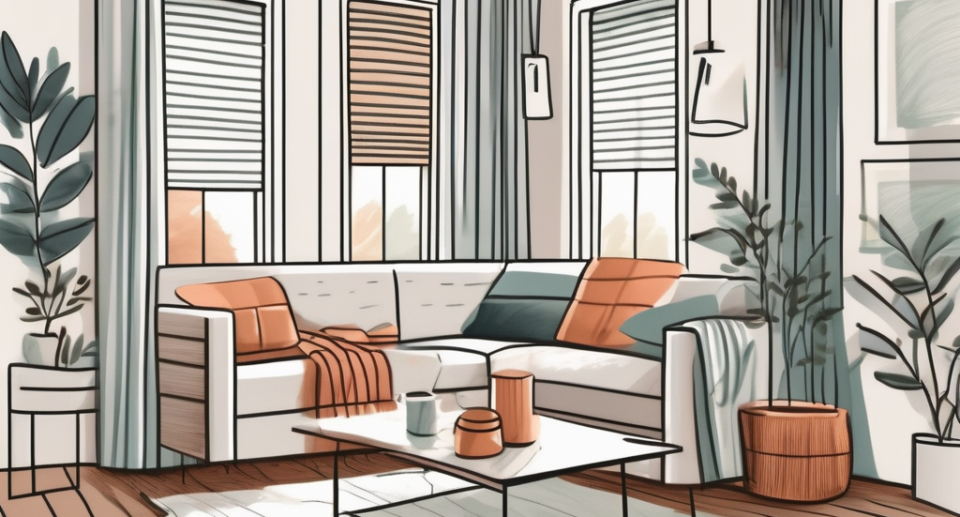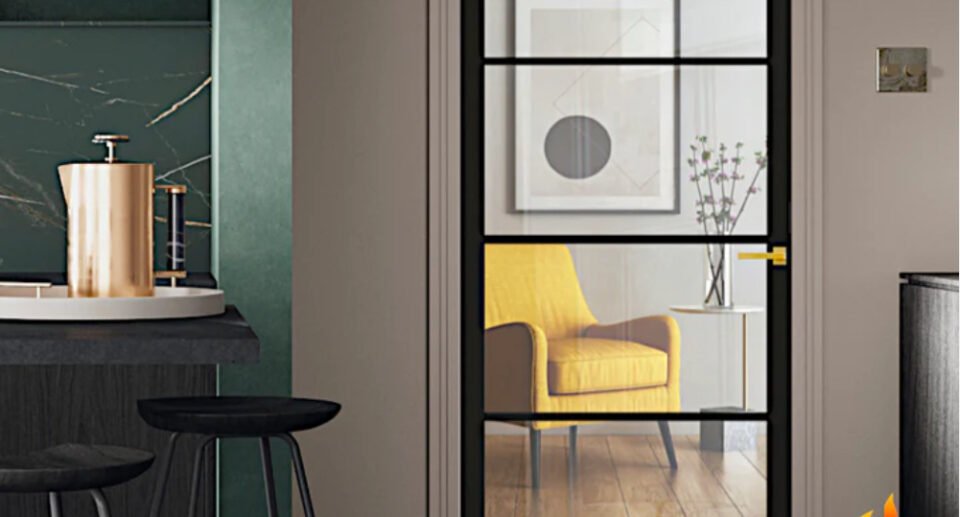Maximize Energy Savings with the Right Window Coverings

Windows are a crucial component of any home, allowing natural light to brighten our living spaces and providing views of the outside world. However, windows can also be a major source of energy loss, leading to higher energy bills and reduced comfort. In order to maximize energy savings and enhance home efficiency, it is important to choose the right window coverings. By selecting energy-efficient window attachments, homeowners can improve insulation, enhance privacy, control light, and save on energy costs.
The Importance of Energy-efficient Window Attachments
When it comes to maximizing energy savings, the right window attachments can make a significant difference. By blocking heat gain in the summer and heat loss in the winter, energy-efficient window coverings help maintain a comfortable indoor temperature throughout the year. This not only reduces reliance on heating and cooling systems but also lowers energy consumption and greenhouse gas emissions.
Energy-efficient window attachments play a crucial role in sustainable living and environmental conservation. By minimizing the need for excessive heating or cooling, these coverings contribute to a more eco-friendly household. Additionally, the reduction in energy consumption translates to lower utility bills, providing both environmental and economic benefits.
Maximizing Energy Savings with Window Attachments
One of the primary advantages of energy-efficient window coverings is their ability to optimize sun energy savings. By creating an additional layer of insulation between the interior and exterior, these attachments help reduce heat transfer, minimizing the need for artificial heating or cooling. Examples of energy-efficient options include cellular shades, insulated curtains, and reflective blinds.
Cellular shades, also known as honeycomb shades, are designed with pockets that trap air, creating a buffer against heat transfer through windows. Insulated curtains feature multiple layers of fabric with thermal backing to enhance their insulating properties. Reflective blinds are coated with a metallic layer that reflects sunlight, reducing heat gain in the summer.
Enhancing Home Comfort with Energy-efficient Window Coverings
Aside from energy savings, choosing the right window attachments can greatly enhance home comfort. With the proper coverings, homeowners can better control the amount of natural light, heat, and glare entering their living spaces. This allows for a more comfortable and relaxing environment, while also preserving furniture and decor from sun damage.
Moreover, energy-efficient window coverings contribute to sound insulation, reducing noise pollution from outside. This is particularly beneficial for homes located in busy urban areas or near highways. By creating a barrier against external noise, these coverings help create a peaceful and tranquil indoor environment, promoting overall well-being and relaxation.
Advantages of Using Window Attachments
Energy efficiency is not the only advantage of utilizing window attachments. These coverings offer a range of benefits that go beyond just saving energy. Let’s explore some of the key advantages:
Improving Insulation and Energy Efficiency
Window attachments such as cellular shades or thermal curtains provide additional insulation, reducing drafts and heat transfer. This improves energy efficiency by minimizing the need for heating or cooling, ultimately saving on energy costs.
Moreover, by creating a barrier between the interior of a home and the outside environment, window attachments can also help regulate indoor temperatures, ensuring a comfortable living space throughout the year. This added insulation not only reduces energy consumption but also contributes to a more sustainable lifestyle by decreasing the carbon footprint associated with excessive heating or cooling.
Enhancing Privacy and Light Control
Window coverings like blinds, shutters, or sheer curtains allow homeowners to control the amount of natural light entering their spaces. This enhances privacy, prevents glare on screens, and creates a relaxing ambiance, especially during daytime hours.
In addition to providing privacy and light control, window attachments can also act as sound barriers, reducing noise pollution from outside sources. This feature is particularly beneficial for homes located in busy urban areas or near high-traffic roads, where external sounds can disrupt the peace and quiet of indoor spaces. By enhancing acoustic insulation, window attachments contribute to a more serene and tranquil environment, promoting overall well-being and comfort within the home.
Understanding Energy Ratings for Window Attachments
When choosing energy-efficient window coverings, it is important to understand and consider energy performance labels. These labels provide valuable information about the attachments’ efficiency, insulation values, and potential energy savings.
Energy ratings play a crucial role in helping consumers make informed decisions about their window treatments. By understanding the various components of these ratings, homeowners can select window coverings that not only enhance the aesthetics of their living spaces but also contribute to energy savings and environmental sustainability.
Decoding Energy Performance Labels
Energy performance labels typically include information about the product’s U-factor, solar heat gain coefficient (SHGC), visible transmittance, and air leakage. These values help homeowners make informed decisions regarding the energy efficiency of their chosen window attachments.
The U-factor measures how well a window covering prevents heat from escaping a room, while the SHGC indicates the amount of solar heat that can pass through the attachment. Visible transmittance measures the amount of visible light that can penetrate the covering, and air leakage quantifies the amount of air that can pass through gaps in the attachment.
Choosing the Most Energy-efficient Window Treatments
When it comes to energy efficiency, not all window coverings are created equal. As consumers, it is important to look for window attachments that have been tested and certified by reputable organizations such as ENERGY STAR. These certifications ensure that the products meet strict energy efficiency guidelines and can deliver significant savings in terms of energy consumption.
Additionally, considering factors such as the orientation of windows, climate conditions, and desired level of privacy can further help homeowners select the most suitable and energy-efficient window treatments for their specific needs. By investing in high-quality, energy-efficient window coverings, individuals can not only reduce their energy bills but also contribute to a more sustainable and eco-friendly living environment.
Mastering the Art of Operable Window Coverings
Operable window coverings provide the added convenience of adjusting light and privacy levels as desired. By understanding and utilizing the different operating mechanisms, homeowners can make the most of their window attachments.
One popular type of operable window covering is the classic roller shade. These shades are operated by a simple pull mechanism, allowing users to easily raise or lower the shade to their preferred height. Roller shades come in a variety of materials, from light-filtering to blackout, catering to different needs and preferences. Additionally, some roller shades are equipped with motorized systems, enabling remote control operation for ultimate convenience.
Another versatile option for operable window coverings is the adjustable blinds. These blinds feature horizontal slats that can be tilted to control the amount of light entering a room while maintaining privacy. Homeowners can choose between materials such as wood, faux wood, or aluminum, each offering unique aesthetics and durability. With cordless or motorized options available, adjusting the blinds has never been easier, providing a seamless blend of functionality and style.
Tips for Operating and Maintaining Window Attachments
Window coverings not only enhance home efficiency but also add aesthetic value to living spaces. To ensure optimal performance and longevity, it is important to follow proper care and maintenance guidelines.
When selecting window attachments, consider factors such as light control, privacy, and energy efficiency. Blinds offer adjustable slats for light filtering, while shades provide a clean look and insulation. Curtains and drapes can add a touch of elegance and warmth to a room. Understanding the purpose of each type of window treatment can help you make the best choice for your space.
Proper Care and Cleaning of Window Treatments
Each type of window attachment requires specific care and cleaning methods. Whether it is dusting blinds, washing curtains, or vacuuming shades, regularly maintaining window coverings helps preserve their functionality and appearance.
For fabric window treatments, it is recommended to follow the manufacturer’s cleaning instructions to prevent damage. Vacuuming with a brush attachment can remove dust and debris from curtains and drapes. Blinds can be wiped down with a damp cloth or dusted with a microfiber cloth. Regular cleaning not only keeps your window coverings looking their best but also contributes to a healthier indoor environment.
Troubleshooting Common Window Attachment Issues
Despite their benefits, window attachments may encounter occasional issues. From uneven cord tension to faulty operating mechanisms, it is important to address these problems promptly, either through self-troubleshooting or by seeking professional help.
If you notice that your blinds are not closing evenly or your shades are not retracting smoothly, check for any obstructions or tangled cords. Simple adjustments or untangling can often resolve these issues. However, if the problem persists, it may be necessary to contact a professional for repairs or replacements to ensure the continued functionality of your window attachments.
Exploring the Different Types of Window Attachments
With a wide variety of window attachments available in the market, homeowners can choose options that suit their specific needs, preferences, and budget. Let’s take a closer look at the different types of window coverings:
Interior Window Treatments: Aesthetics and Functionality
Interior window attachments include curtains, blinds, shades, and shutters. These coverings not only offer varying levels of light control and privacy but also add a touch of style to any room. From elegant drapes to sleek roller shades, interior window treatments come in a range of materials and designs, allowing homeowners to create personalized and visually pleasing spaces.
Exterior Window Coverings: Style and Durability
Exterior window attachments, such as awnings, window film, or shutters, provide additional layers of protection against the elements while enhancing curb appeal. These coverings help reduce heat gain, protect against UV rays, and enhance privacy. Additionally, exterior window coverings are designed to withstand harsh weather conditions, ensuring long-lasting durability and functionality.
By understanding the importance of energy-efficient window attachments and exploring the various options available, homeowners can make informed choices that not only maximize energy savings but also enhance home comfort and style. So, why not give your windows the attention they deserve and start enjoying the benefits of the right window coverings today?

Hello, I’m Keith Jones. I’m the author and head of content here of door and window guide. I’ve been in the window and door industry for over 10 years in the UK and North America. I’ve had quite a few roles during my career mainly in Worldwide sales. I’m now semi retired so I thought I’d put my knowledge to good use educating people about all they might need to know about door and window related topics.






